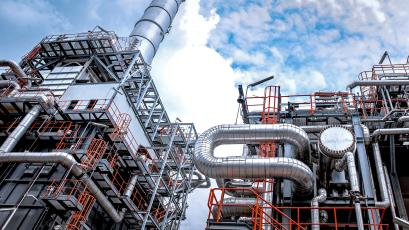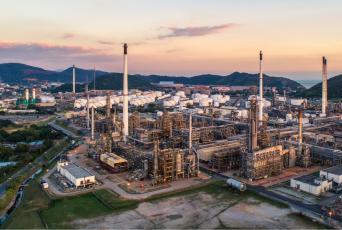Earnings in commodities-based industries can vary widely from year to year (and as we observed during the pandemic, they can even go negative). For fuel refiners that sell gasoline, diesel and jet fuel commodities, the last several quarters have seen a big upswing in earnings. While this is certainly a departure from the norm, today’s earnings environment is still fundamentally the product of supply and demand. Where the latter is concerned, we are in a welcome period of resurgent global demand for gasoline, diesel and jet fuel, a sign that economic activity is returning. Regarding supply, today’s market is a testament to what can happen when significant refining capacity is lost while the world still very much needs liquid fuels.
What does this have to do with refining capacity?
Most of the refining capacity lost globally amid the pandemic (roughly 3.3 MMBD) has been permanently shuttered or is being converted away from petroleum processing. Around the world, additional refining capacity is slated to come online later this year that will essentially make up for what was lost during the pandemic. Providing these facilities run at solid utilization rates, they will help to rebalance and calm the market. Until then, however, the balance is skewed toward demand and earnings reflect this.
Because of the up-and-down reality of refinery earnings over time, it would be a mistake to regulate, legislate or tax based on the high points. Looking at a few quarters of good earnings in isolation doesn’t provide an accurate representation of long-term trends, nor is it an accurate forecast of future industry earnings. This is why refiners don’t base their growth plans and investments on momentary high returns. They take the long view and consider demand projections, workforce and operational costs, and present and future policy environments when deciding how to allocate earnings.
That context is important to answer the question of what happens with refinery profits and whether using earnings to “buy back” stock is, in fact, an appropriate use of those funds. Let’s get into it.
Publicly owned companies, like many U.S. refineries, have a fiduciary responsibility (which is a legal obligation) to act in the best interest of their shareholders, and that extends to how companies spend their earnings. Often, earnings are spent on a combination of the following:
Companies can pay direct dividends to shareholders.
If they go this route, companies divide and distribute some or all of their profits proportionally among their owners (aka shareholders).
Companies can re-purchase or “buy back” shares of stock.
One of the ways companies raise capital is by issuing shares, or stock, for sale. They basically divvy their company up into a number of smaller pieces and let the public purchase those individual shares. When companies announce buy-back programs, they are committing to re-purchasing and retiring some number of company shares. Taking shares off the table this way increases the value of any remaining shares held by public company investors. Investors include a wide range of people—among them, individual buyers, retirees, public employees and service workers, and anyone with 401k and mutual fund accounts. Investors will see their company shares increase in value as a result of stock buy-back programs, but they will only realize those gains if they choose to cash out and sell their shares. Buying back stocks is very common across industries:
- UPS (the United Parcel Service) just announced (on January 31) a $5 billion stock buy-back program.
- Walmart announced a $20 billion buy-back program in November.
- In the last two months of 2022, multi-million and multi-billion buyback programs were announced by Monster Beverage Corporation, Marriott International, Hilton, Fox Corporation, Kellogg Company and many more.
- In October, Visa announced a $12 billion buyback program.
- Texas Instruments is spending $15 billion to repurchase company shares per a September announcement.
- Johnson & Johnson announced in September that it will launch a $5 billion buyback program.
- Alphabet (Google’s parent company) announced in April that its board of directors authorized $70 billion in share repurchases.
- Apple’s board of directors in April approved a boost to their buyback program totaling $90 billion.
Companies can retire or pay down debt.
COVID cut into demand for refined products and many U.S. fuel manufacturers had to reduce operations and readjust to stay in business. One U.S. energy company with a big refining arm noted publicly that they lost $20 billion over the pandemic and had to borrow an additional $30 billion to maintain essential operations and be ready for post-pandemic demand. Borrowed money, like credit card debt, has to be repaid with interest. The faster debt gets paid off, the less you lose on interest. Many companies consider it a wise move to spend earnings retiring or paying down debt and several have used recent quarterly earnings to do just this.
Capital intensive companies can re-invest profits into new process units, improved operations, building projects, acquisitions and hiring.
Beyond essential facility upkeep and maintenance—which is budgeted into regular operational costs—companies may choose to re-invest profits in business expansion projects—particularly if the economy and demand projections are strong. Amid economic and regulatory uncertainty or talks of recession, companies may be more cautious with these investments. With the current political and financial attitude toward fossil fuels—which has been described by some as “drill today, disappear tomorrow”—many shareholders are questioning the wisdom and risk associated with long-term investments in refining and liquid fuel production. They fear money invested in new projects could become “stranded” and never reach the point of profitability before the political rug gets pulled out from under them. Restarting a refinery or building a new processing unit at an existing refinery are major projects not easily turned off and on in the span of a two- to four-year political cycle.
- How long can it take for an upstream investment to become profitable?
AFPM and the refining business itself are distinct from the business of exploration and production, but here is a useful data point: for companies exploring new wells and drilling projects, it can take anywhere from 7-10 years to produce energy and even longer to become profitable. - How long might it take for a new refining project to become profitable? On the refining side of the business, building a new process unit to increase fuel production capacity is a massive investment—often costing billions of dollars. These projects take time to permit and build. And at those costs, it can take 15-20 years for a project to become profitable.
Notice what’s not an option: Discounting wholesale fuel from refineries.
Refiners do not set prices for the wholesale fuel they sell. The price of refined product at a given moment depends on the global and regional supply of that product compared to demand. Market prices change in real time responding to demand trends, movements in the petroleum supply chain and the behaviors of market participants—refiners (including government-backed refining corporations outside the United States), wholesalers, commodities traders, distributors and fuel retailers. If U.S. refiners were to offer wholesale gasoline blendstock below market price, other participants in the supply chain would snap it up and sell it at market value to the next link in the chain. Artificially lowered prices would encourage an uptick in demand and further stretch limited supplies—the exact opposite of bringing the market into better balance. Additionally, selling gasoline blendstock for less than it is worth would violate companies’ fiduciary responsibility to shareholders. Manipulating the price and artificially discounting product is not an option for U.S. refiners.
Just because a refinery puts its earnings to work through stock buy backs or retiring debt does not mean that it isn’t also making every effort to support U.S. fuel production and the rebuilding of our liquid fuel stores. American refineries have operated for much of the past year at near full utilization—a stunning level of effort that has contributed more gasoline, diesel and jet fuel to the global market than any other country. This is not a zero-sum game. What refiners are doing is meeting their fiduciary obligations to shareholders while also amply supplying both our country’s and our global allies’ energy needs.
The American Fuel & Petrochemical Manufacturers (AFPM) is the leading trade association representing the makers of the fuels that keep us moving, the petrochemicals that are the essential building blocks for modern life, and the midstream companies that get our feedstocks and products where they need to go. We make the products that make life better, safer and more sustainable — we make progress.


